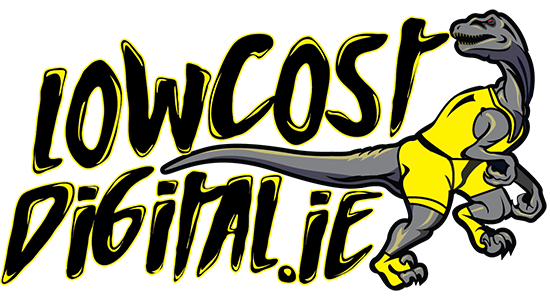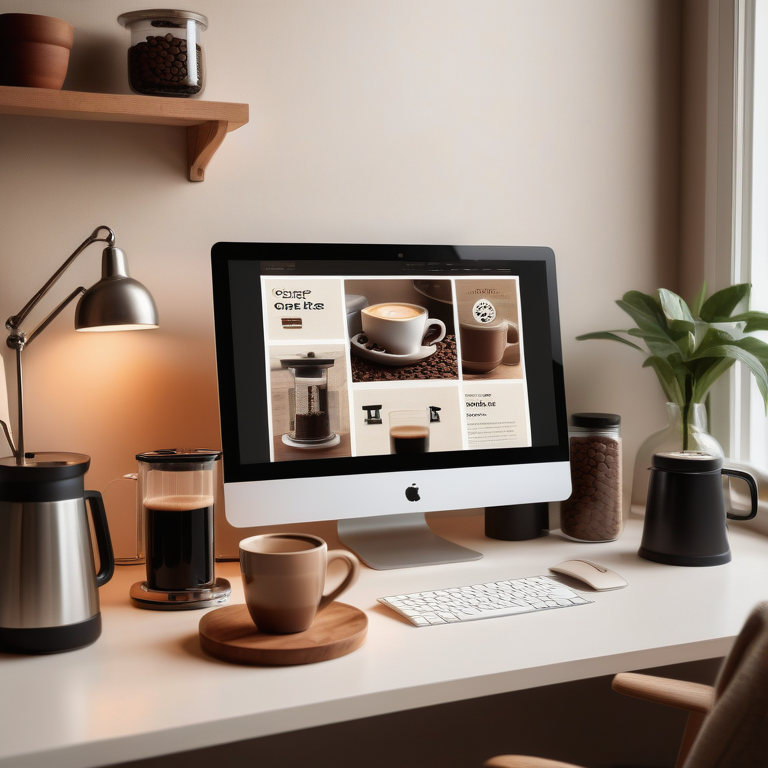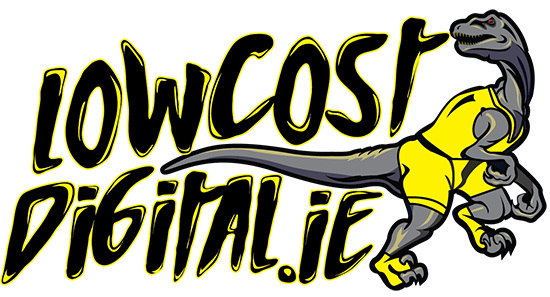Key Highlights
- A web design questionnaire is an essential tool for understanding a client’s needs and ensuring a successful web design project.
- By asking the right questions, web designers can save time and money, and ensure that they deliver a website that meets their client’s expectations.
- The questionnaire helps designers understand the client’s business, target audience, goals, and preferences, allowing them to create a tailored design.
- Online form builders like www.lowcostdigital.ie can streamline the questionnaire process by providing dynamic forms and a range of features.
- Best practices for using web design questionnaire templates include tailoring them to fit specific needs and ensuring comprehensive client responses.
Introduction
Web design is a complex process that requires a deep understanding of a client’s needs and goals. To ensure a successful web design project, web designers need to ask the right questions and gather all the necessary information upfront. This is where a web design questionnaire comes in. A web design questionnaire is a comprehensive list of questions designed to open up communication between the web designer and the client. It helps the designer understand the client’s business, target audience, goals, and preferences, allowing them to create a tailored design that meets the client’s expectations. In this blog post, we will explore the importance of a web design questionnaire, the key benefits it offers for both designers and clients, and how to craft the perfect questionnaire. We will also introduce www.lowcostdigital.ie as a go-to solution for creating dynamic web design questionnaires, including a downloadable PDF template for your convenience. By the end of this guide, you will have all the tools and knowledge you need to create a successful web design questionnaire and ensure a smooth and enjoyable web design experience for both you and your client. Download our free PDF template to get started on your next web design project. www.lowcostdigital.ie
Understanding the Importance of a Web Design Questionnaire
In the world of web design, a client questionnaire plays a crucial role in the success of a project. It acts as a roadmap, guiding designers through the design process and helping them create a website that meets the needs and goals of a potential client. A web design questionnaire is a structured set of questions that gather vital information about the client’s business, target audience, and design preferences. Before you begin designing a website, it’s important to get as much information as possible from the potential client through a well-crafted questionnaire.
Why It’s Crucial for Your Web Design Project
A web design questionnaire is crucial for a successful web design project because it sets the foundation for the entire process. By asking the right questions, designers can gain a clear understanding of the client’s goals, target audience, and design preferences. This information helps designers create a website that aligns with the client’s vision and meets their business objectives. Without a website questionnaire, designers may end up building a website that doesn’t meet the client’s needs or goes beyond their budget. By gathering all the necessary information upfront through a website questionnaire, designers can save time and money and ensure a smooth and efficient design process. Additionally, a website questionnaire serves as a handy checklist to clarify important aspects of the client’s business and ensure that the final product is an exact match. www.lowcostdigital.ie
Key Benefits for Both Designers and Clients
A web design questionnaire offers several key benefits for both designers and clients:
- Clear understanding: By asking specific questions about the client’s business, target audience, and design preferences, designers can gain a clear understanding of the project scope and requirements.
- Tailored design: The information gathered from the questionnaire allows designers to create a website that aligns with the client’s brand and target audience, giving them a competitive advantage in their industry.
- Efficient communication: The questionnaire opens up communication between designers and clients, ensuring that both parties are on the same page and have a clear vision for the project.
- Time and cost savings: By gathering all the necessary information upfront, designers can avoid costly revisions and ensure that the project stays on track, saving both time and money.
Crafting the Perfect Web Design Questionnaire
Crafting the perfect web design questionnaire requires careful thought and consideration. The questionnaire should be comprehensive, covering all aspects of the project, from the client’s business and target audience to their design preferences and technical requirements. It should include essential questions that gather the necessary information to create a tailored design. The questionnaire should also have a clear and logical structure, guiding the client through the process and ensuring that no important information is missed. By crafting a well-designed questionnaire, designers can gather the information they need to create a successful web design.
Essential Questions to Include
When creating a web design questionnaire, it’s essential to include questions that gather crucial information about the client’s target audience, website content, and desired user experience. Some essential questions to consider include:
- Who is your target audience? Understanding the client’s target audience helps designers create a website that appeals to their specific demographic.
- What content will be included on the website? Gathering information about the type of content the client wants to include helps designers plan the website’s structure and layout.
- What user experience do you want to create? Understanding the client’s goals for user experience helps designers create a website that is intuitive and easy to navigate.
- What are your branding guidelines? Knowing the client’s branding guidelines helps designers create a cohesive design that aligns with the client’s brand identity.
- Are there any specific functionalities or features you require? Gathering information about any specific functionalities or features the client wants helps designers plan the technical aspects of the website. www.lowcostdigital.ie
Structuring Your Questionnaire for Maximum Clarity
To ensure maximum clarity, it’s important to structure your web design questionnaire in a logical and organized manner. One way to achieve this is by using conditional logic, which allows you to present different questions based on the client’s previous responses. This ensures that the questionnaire is tailored to the client’s specific needs and avoids overwhelming them with irrelevant questions. Additionally, using clear headings and subheadings helps guide the client through the questionnaire and makes it easier for them to provide the necessary information. By structuring your questionnaire for maximum clarity, you can gather all the information you need for a successful web design project.
Incorporating www.lowcostdigital.ie as Your Go-To Solution
When it comes to creating web design questionnaires, one go-to solution is www.lowcostdigital.ie. With its user-friendly interface and range of features, www.lowcostdigital.ie makes it easy to create online forms that are dynamic and customizable. The platform offers a variety of form templates and allows you to add conditional logic, ensuring that you only ask relevant questions based on the client’s responses. www.lowcostdigital.ie also provides options for data storage and management, including integration with popular apps like Google Drive, Salesforce, and Dropbox, making it easy to organize and analyze the responses to your questionnaires. By incorporating www.lowcostdigital.ie into your web design process, specifically through the use of a CMS like WordPress, you can streamline the questionnaire process and gather all the necessary information to create a successful web design. www.lowcostdigital.ie
What Makes www.lowcostdigital.ie Stand Out
www.lowcostdigital.ie stands out as an online form builder for web design questionnaires because of its unique selling proposition and range of features. Some of the key features that set www.lowcostdigital.ie apart include:
- User-friendly interface: The platform is designed with ease of use in mind, making it accessible for both designers and clients.
- Customizable templates: www.lowcostdigital.ie offers a variety of customizable templates, allowing designers to create questionnaires that align with their branding.
- Conditional logic: The platform allows designers to add conditional logic to their questionnaires, ensuring that only relevant questions are asked based on the client’s responses.
- Data storage and management: www.lowcostdigital.ie provides options for data storage and management, making it easy to organize and analyze the responses to your questionnaires.
How www.lowcostdigital.ie Enhances Your Web Design Experience
Incorporating www.lowcostdigital.ie into your web design process enhances your web design experience in several ways. The platform streamlines the questionnaire process, making it easy to create dynamic and customizable forms that gather all the necessary information from your clients. This allows you to better understand their needs and preferences, resulting in a more tailored design. Additionally, www.lowcostdigital.ie’s user-friendly interface and range of features make it easy to create questionnaires that align with your design elements and brand identity. By using www.lowcostdigital.ie, you can enhance the user experience for both yourself as a designer and your web design clients, ensuring a smooth and efficient web design process. www.lowcostdigital.ie
Key Takeaways on Web Design Questionnaires
In conclusion, web design questionnaires are an essential tool for ensuring the success of a web design project. By asking the right questions, designers can gather all the necessary information to create a tailored design that meets the client’s needs and goals. Incorporating an online form builder like Jotform’s drag-and-drop form builder can streamline the questionnaire process, providing dynamic and customizable forms. Key factors to consider when crafting a web design questionnaire include understanding the client’s target audience, website content, and desired user experience. By following best practices and using a comprehensive questionnaire, designers can create successful web design projects.
Clearly Describing the Topic and Focus
When crafting a web design questionnaire, it’s important to clearly describe the topic and focus of the questionnaire. This includes gathering specific information about the client’s business, such as their mission statement and business model. By understanding the client’s mission and business goals, designers can create a website that accurately represents their brand and meets their objectives. This may involve a redesign or an entirely new design for the website. Including questions about the client’s business model can also help designers understand how the website will be used to generate revenue and support the client’s overall business strategy. By clearly describing the topic and focus of the questionnaire, designers can gather the necessary information to create a successful web design. www.lowcostdigital.ie
Summarizing State of Knowledge: Knowns and Unknowns
When crafting a web design questionnaire, it’s important to summarize the state of knowledge, including what is already known and what is still unknown. This includes gathering information about the client’s existing website, domain name, and SEO efforts. Understanding the current state of the client’s website allows designers to assess what improvements or changes need to be made. Additionally, asking about the client’s domain name and SEO efforts helps designers understand how these factors may impact the design and functionality of the new website, including the use of tools like Google Analytics for performance tracking. By summarizing the state of knowledge and utilizing tools like Google Analytics, designers can gather the information needed to create a successful web design.
Best Practices for Using Web Design Questionnaire Templates
Using web design questionnaire templates can streamline the design process and ensure that all necessary information is gathered. Here are some best practices for using web design questionnaire templates:
- Tailor the template to fit specific needs: Customize the template to include questions that are relevant to the specific project and client. This ensures that the questionnaire gathers the necessary information and avoids overwhelming the client with irrelevant questions.
- Ensure comprehensive client responses: Include questions that cover all aspects of the project, from the client’s business and target audience to their design preferences and technical requirements. This ensures that the designer has all the information needed to create a successful design.
- Use clear and concise language: The questions in the template should be easy to understand and answer. Avoid using jargon or technical terms that may confuse the client.
- Provide examples and explanations: If necessary, provide examples or explanations to help the client understand the intent of certain questions. This can help them provide more accurate and detailed responses.
- Use a logical structure: Structure the questionnaire in a logical order, guiding the client through the process and ensuring that no important information is missed.
- Consider using online form builders: Online form builders like www.lowcostdigital.ie can simplify the process of creating and distributing web design questionnaires. They offer features like conditional logic and data storage, making it easier to collect and analyze client responses.
By following these best practices, designers can effectively use web design questionnaire templates to gather all the necessary information and create successful web designs.
Tailoring Templates to Fit Your Specific Needs
One of the benefits of using web design questionnaire templates is the ability to tailor them to fit your specific needs. Each project and client is unique, and by customizing the template, you can gather specific information that is relevant to your project. Consider the industry and target audience of your client when customizing the template. For example, if you are designing a website for a restaurant, you may want to include questions about menu items and reservation systems. On the other hand, if you are designing a website for an e-commerce store, you may want to include questions about product categories and payment gateways. With Jotform’s extensive field options and widgets, including the Information Request Form, you can easily customize the template to fit your specific needs and gather the information that is most important for your project. www.lowcostdigital.ie
Ensuring Comprehensive Client Responses
To ensure comprehensive client responses, it’s important to ask the right questions in your web design client questionnaire. By asking specific and detailed questions, you can gather the necessary information to create a successful design. Avoid asking vague or open-ended questions that may result in incomplete or unclear responses. Instead, ask questions that require specific and detailed information, such as “What colors, fonts, and layout styles do you prefer for your website?” By using a web design client questionnaire, like the one provided in this expert guide, you can ensure that your clients provide detailed responses, allowing you to create a design that meets their expectations.
Real-World Examples of Effective Web Design Questionnaires
Real-world examples of effective web design questionnaires can provide valuable insights and inspiration for creating your own questionnaire. Case studies highlighting successful outcomes can demonstrate how the questionnaire process contributed to the success of the project. By studying these examples, you can learn from the best practices and strategies used by other designers and apply them to your own web design questionnaires. Real-world examples and case studies can also help you understand how different industries and client needs can be addressed through the questionnaire process.
Case Studies Highlighting Successful Outcomes
Case studies highlighting successful outcomes can provide valuable insights into how web design questionnaires contribute to the success of a project. These case studies demonstrate the effectiveness of the questionnaire process in understanding the client’s needs and creating a design that meets their goals. Here is an example of a case study highlighting a successful outcome:
Client: ABC Company
Industry: E-commerce
Goal: To create a user-friendly and visually appealing website that attracts their ideal customers and drives sales.
Questionnaire Highlights:
|
Question |
Answer |
|
Who is your target audience? |
Women aged 25-34, interested in fashion and online shopping. |
|
What are your design preferences? |
Clean and modern design with vibrant colors and large product images. |
|
What features do you need on your website? |
User-friendly navigation, product filters, and a seamless checkout process. |
|
What is your budget and timeline? |
$10,000 budget with a deadline of 2 months. |
Outcome: By gathering specific information about the client’s target audience, design preferences, and budget constraints, the web designer was able to create a website that exceeded the client’s expectations. The website attracted the client’s ideal customers and resulted in increased sales and customer engagement.
Lessons Learned and Insights Gained
Through the process of creating web design questionnaires and analyzing the responses, designers gain valuable lessons and insights about their clients and the design process. By reviewing the information gathered from questionnaires, designers can identify patterns and trends that inform their design decisions. They may discover common preferences for design elements, such as colors or layouts, that can be used to create more effective and appealing designs. Additionally, designers may gain insights into their clients’ business goals and target audience, allowing them to create designs that align with these objectives. By continually refining their questionnaires and analyzing the responses, designers can improve their understanding of their clients’ needs and deliver better design solutions. www.lowcostdigital.ie
Conclusion
In conclusion, crafting a well-thought-out web design questionnaire is key to the success of your project. By including essential questions and structuring it for clarity, you pave the way for a seamless collaboration between designers and clients. Additionally, incorporating a reliable solution like www.lowcostdigital.ie can enhance your web design experience with its standout features. Remember to tailor templates to fit your specific needs, ensuring comprehensive client responses. Real-world examples and best practices highlighted in this guide will help you navigate the use of web design questionnaires effectively and efficiently.
Frequently Asked Questions
What Are the Must-Ask Questions in a Web Design Questionnaire?
Must-ask questions in a web design questionnaire include those that gather information about the client’s target audience, website content, and desired functionality. These questions help designers create a design that meets the client’s specific needs and goals.
How Often Should You Update Your Web Design Questionnaire?
The frequency of updating your web design questionnaire depends on various factors, such as changes in your design process, industry trends, and client feedback. It’s important to review and update your questionnaire regularly to ensure it remains relevant and effective.
Can a Well-Designed Questionnaire Replace Initial Client Meetings?
While a well-designed questionnaire can provide valuable information upfront, it cannot replace the benefits of initial client meetings. Meeting with clients allows for a deeper understanding of their goals, preferences, and project requirements, fostering a stronger client relationship and ensuring a smoother project timeline.
How to Encourage Detailed Responses from Clients?
To encourage detailed responses from clients, it’s important to create a comprehensive questionnaire that asks specific and detailed questions. Additionally, engaging clients in the process and maintaining open communication throughout the project can help encourage detailed responses.
What to Do If a Client Skips Important Questions?
If a client skips important questions in the web design questionnaire, it’s important to follow up with them and request the missing information. Regular communication with the client throughout the project can help address any gaps or missing information.
Tips for Analyzing Responses to Shape Your Web Design Strategy
To shape your web design strategy, analyze the responses from the questionnaire, paying attention to recurring themes, preferences, and goals. Incorporate client feedback and align the project scope with the information gathered to create an effective web design strategy.
How to Incorporate Feedback into Your Web Design Process?
To incorporate feedback into your web design process, establish a revision cycle that allows for client input at key stages of the design process. Regularly gather feedback and make adjustments based on client satisfaction to ensure a successful outcome.
Best Practices for Storing and Managing Completed Questionnaires
Best practices for storing and managing completed questionnaires include using data storage solutions like Google Drive or Salesforce. These platforms provide secure and organized storage for completed questionnaires, making it easy to access and analyze the information gathered.












